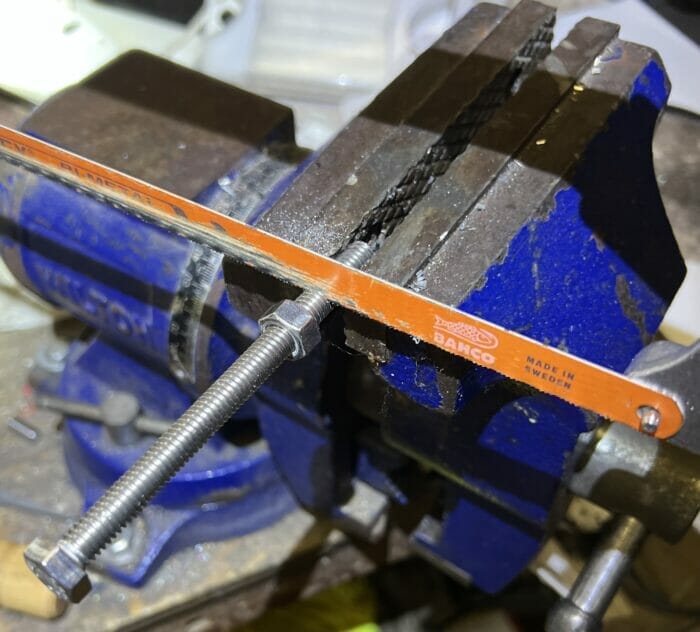
I’m guessing most of you know this one, but I didn’t when I first started working on boats, so it may be useful.
When cutting a bolt off that’s too long, first put a nut on it as shown in the above. Winding the nut off cleans up burs on the threads from cutting.
But even better, to avoid fragments that will make it difficult to get the nut on, particularly in confined spaces, before winding the nut off, grip it in the vice and use a fine file to clean up the cut end—only takes a moment and makes a world of difference.

¹Bad pun alert

I also use a small triangular file to clean up the threads.
One of my favorite boatyard hacks is a thread restoring file.
Counter to the name, it is NOT used as file, but rather as a tool for straightening bent threads. You start where there are good threads and slowly work your way towards the damaged section, keeping several flights engaged in the good threads at all times. Typical uses include cleaning sealant out of threads (better than a wire brush), cleaning up damaged pipe threads with sealing problems, and cleaning up threaded studs and parts that would be nearly impossible to replace. Work slowly and it can be a real day-saver.
Yup, I have dies, but this fits more sizes (bolts and pipe) and straightens without cutting away good metal.
https://www.amazon.com/Century-Drill-Tool-92942-Restoring/dp/B00BEZWENG/ref=sr_1_29?crid=2Y8SZ58NJF3M2&keywords=thread%2Bfile&qid=1680986993&sprefix=thread%2B%2Caps%2C112&sr=8-29&th=1
Hi Drew,
That looks like a cool tool. I didn’t even know such a think existed. Thanks
That said, I wonder what the holding reduction would be from this treatment, particularly on stainless steel? I guess I would not use it on something mission critical like a turnbuckle, but would replace instead.
Agreed.
The best uses are when the last few threads have been buggered by impact or pushing a fastener through a hole. The threads you straighten are not going to hold any load, just allow you to assemble the parts.
Remember, you are straightening, not filing. Start with good threads, work outwards, and instead of rushing, think about how much time you are saving.
Hi Drew,
Oh, now I get it, thanks.
This was my exact reaction as well when reading the above tip, thread restoring files are incredibly handy and they can also do double duty as a thread gauge. I usually cut, file flat, file a chamfer and then run the thread file. I find I mostly use them right at the start of the thread so I don’t worry too much about strength loss.
Eric